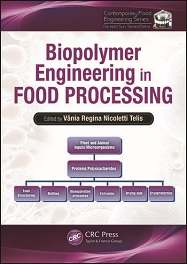Biopolymer Engineering in Food Processing
Material type: TextLanguage: English Series: Contemporary Food Engineering SeriesPublication details: Boca Raton, FL : CRC Press, c2012Description: XVIII, 398 p. : illISBN:
TextLanguage: English Series: Contemporary Food Engineering SeriesPublication details: Boca Raton, FL : CRC Press, c2012Description: XVIII, 398 p. : illISBN: - 9781439844946
- 572 NIC
| Item type | Current library | Shelving location | Call number | Copy number | Status | Date due | Barcode |
|---|---|---|---|---|---|---|---|
 Reference Collection
Reference Collection
|
Reference Section | Department of Food Engineering | 572 NIC | 2022-23 | Available | 97933 |
SUMMARY:
Due to their unique properties and ability to interact with other food components, biopolymers have traditionally played a major role in food processing. Biopolymer Engineering in Food Processing explores processing technology associated with biopolymer applications and discusses both operational and economic aspects.
Following an overview of biopolymer applications and their functionality in different processes, the text examines:
• Production routes, availability, costs, and physicochemical properties of commercial biopolymers
• Rheology of biopolymer suspensions, how concentration and shear may affect their flow behavior, and their response to pressure losses and heat transfer during flow
• Effects of food processing and storage conditions on the viscoelastic and textural properties of food gels
• Mechanical and mass transfer properties of films and coating produced from biopolymers, composites, and nanocomposites
• The use of biopolymer coatings to reduce oil uptake during deep-fat frying of foods and in modified atmosphere storage of foods
The book also explores the application of biopolymers in separation processes for recovery of biocompounds. It discusses biopolymer behavior during thermoplastic extrusion and the response of certain cereals and snacks to extrusion operating parameters. Finally, it reviews engineering aspects of biopolymers used as drying aids in spray-drying and freeze-drying of fruit juices and pulps and discusses biopolymers used as cryoprotectants in food freezing.
A comprehensive source of scientific and technical information for those involved with process design and research and development, the book is also an ideal reference for academic researchers and undergraduate and postgraduate students.
